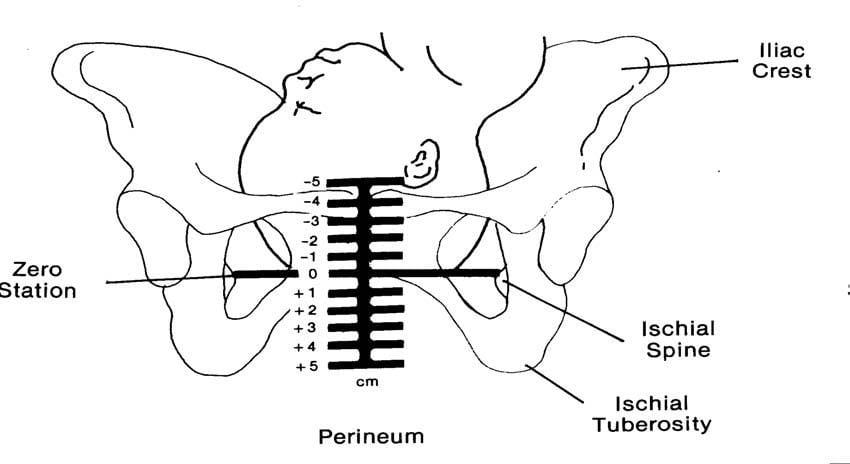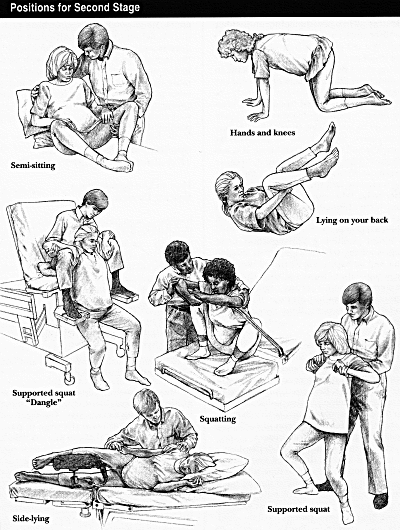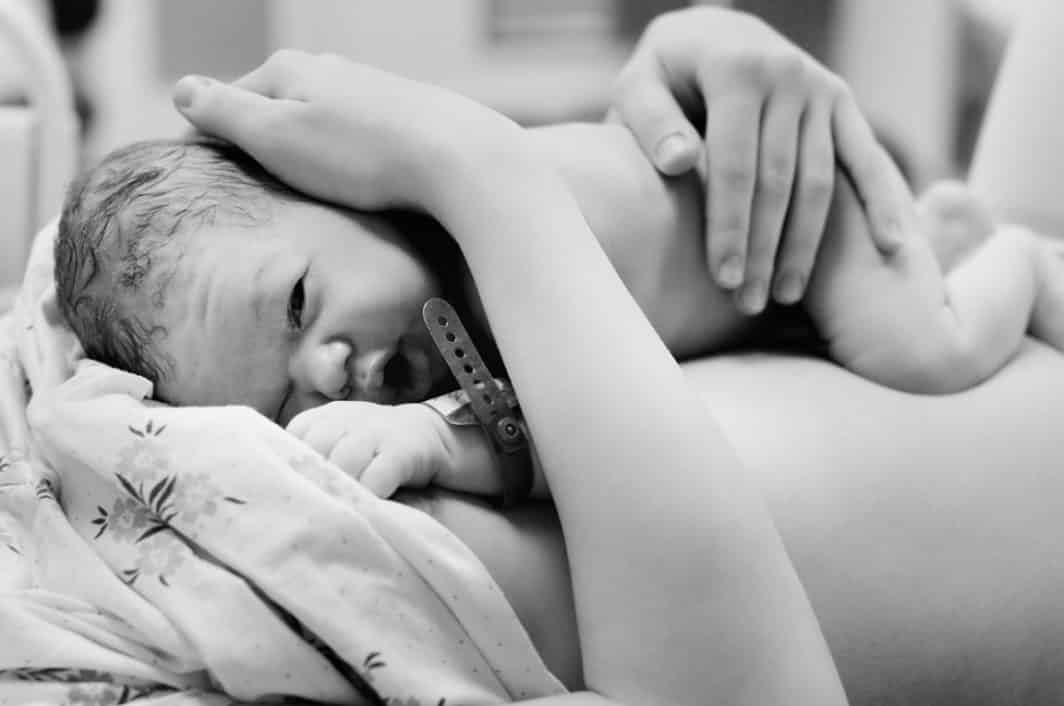You did it! You’ve made it through early labor, active labor, and transition labor. Now you are ready to start pushing during childbirth. Way to go, mama! If you have made it through these phases without pain medications, you are likely exhausted and ready to get this baby out! If you’ve had an epidural, you have probably gotten some rest, may feel pressure in your bottom, and are ready to push. Either way, it’s go time! It’s time to meet your baby. 🙂
When Is It Time To Start Pushing?
Once your cervix is 10 cm dilated, it’s 100% effaced, and your baby is (at least) at 0 station, you are “complete.”1 This is when you can start pushing! During childbirth, pushing anytime before reaching 10 cm could risk you tearing your cervix, which is a definite no-no.2 Wait until your midwife or doctor says you are “complete,” and your cervix is completely dilated and effaced.
If your baby is at 0 station, your doctor or midwife might want you to “labor down” until your baby has gotten a bit lower, especially if you have an epidural. (Laboring down means continuing laboring and not starting pushing until your contractions have pushed your baby lower into the birth canal.3 +1, +2, and +3 stations are much better times to push since the baby is getting closer to the outside world.)

They may want you to labor down because the longer you push, the more likely you will face complications. What are those potential complications?
- The longer you push, the more likely your cervix could swell and not allow you to continue pushing and get the baby out.4
- The longer you push, the more tired you will become. Some women become so tired they cannot finish pushing, so they need a vacuum, forceps, or a C-section.4,5,6
- It could cause your baby to be in distress (have their heart rate rising too high or falling too low) if in the birth canal too long. This would result in an emergency C-section.6
The lower your baby is, the less pushing you have to do during childbirth, the shorter your pushing stage will be, and the sooner you will meet your baby!
What You May Feel When Pushing
When it’s time to start pushing (if you do not have an epidural), you will feel a lot of pressure in your bottom and have an uncontrollable urge to push.1 Your body will automatically start pushing during childbirth when it’s time. You will feel that constant pressure down there whether you’re having a contraction or not.1 It feels almost like you have to pass a major bowel movement.9 (I know. You don’t want to think of birthing your child as passing a bowel movement. But it’s similar to what you will feel, just more intense.)
If you do have an epidural, you should not be feeling your contractions, and you may or may not feel the pressure in your bottom.7,8 If you can’t feel anything (your contractions, your legs, the pressure), you will need your nurse or doctor to tell you when to begin pushing during childbirth.7 This is because you won’t know when a contraction is coming and when it’s the right time to push. (FYI, you should only push during a contraction. Unless there is an emergency and you need the baby out immediately, only push during contractions.10)
Since you have an epidural, you cannot control your lower body completely.7,8 The medical staff must support your legs and help you as you push. Sometimes, women don’t know exactly how hard they are pushing. Everything is numb, so they don’t know if they are pushing too hard or not hard enough. The doctor or nurse will let you know how things are going, and they will coach you and guide you as the baby comes down and out.7
How Long Does Pushing Last?
I’ve seen some women push their babies out in under three minutes and others push for up to three hours. The women who pushed faster were those who did not have an epidural. They had more control and could feel how and when to push. Women who are first-time moms with epidurals usually push for at least an hour and sometimes as long as three hours.9 It depends on how long your doctor allows you to push. First-time mothers who do not have epidurals usually push for only minutes or up to an hour and a half. It just depends. And typically, the pushing time gets shorter with each child you have.11 Thankfully!
Positions and Tips on How To Push
How Do You Push?
This question may sound silly because you may think, “Isn’t it natural? Isn’t my body supposed to know how to push my baby out?” This is a bit complicated because the answer is yes and no. It is natural, and your body will push for you. But it’s good to know how to push correctly to get some effective pushes and shorten your pushing time. I’ve seen many women not push effectively, so I want to give you some tips on how to push:
Without an Epidural
Here’s how to push without an epidural:
- Listen to your body: If you need to stop and breathe during your pushes or move into a different position, do it! Typically, doctors want you to hold your breath while they count to 10 slowly, and you push that whole 10 count. But sometimes, pushing that way can cause you to tear more.12 If you do not have an epidural, your body will tell you what is and isn’t working. Listen to what your body is telling you, and shut out what others might be saying (unless you push for too long, you want to listen to some advice). Doing what feels right is best.
- Use gravity: Get upright! The more you use gravity to your advantage, the better. It’s a lot more difficult to push when you are on your back or your side, which causes you to push for longer. When you use gravity, it can help you while pushing during childbirth.3,9,13
- Push when you feel the urge: Your body will tell you when to start pushing since you don’t have any drugs in your system. Once you feel the next contraction coming, your body will naturally begin pushing the baby out. Follow that instinct! Don’t force anything if your body is not telling you to push. Also, rest in between pushes.
With an Epidural
This is how to push with an epidural:
- Push during contractions: You don’t want to waste your energy and push when you are not having a contraction. Your contractions are already helping push your baby down, so using that momentum helps get your baby lower. That will help make your pushes more effective.
- Push with your bottom: Some women start pushing their legs out when they push. Or, they hold their breath too much and push with their faces. This is because they forget where they need to focus when pushing. Remember, your pushing energy needs to be in your bottom.
- Open your pelvis: With an epidural, there aren’t as many pushing positions available. But you want to widen your pelvis and get it to open as much as possible. This is why many women pull their legs back while pushing to help open their pelvis (as if squatting) to allow their baby to get lower into their pelvis.
If you are pushing for a while and having difficulty getting the baby out, I recommend looking in a mirror. I know . . . you probably don’t want to see what’s going on down there. But sometimes, when you have been pushing for too long, it’s helpful to see what you’re doing. This can help you see where to push. I’ve had several clients say, “Oooh! I see now where I need to push and what I need to do.” And then they push a lot more effectively. So a mirror can be a great tool!
What Are the Different Positions I Can Push In?
The answer to this question greatly depends on where you plan to have your baby (at a hospital, home, or birth center) and if you receive any pain medication (epidural or analgesic).14
If you have chosen to have a natural birth (no pain medication) at the hospital or have your baby at home or a birth center, here are your pushing options:
Without an Epidural
Here are the positions you can push in without an epidural:
- Hands and knees
- Squatting with a squat bar
- Semi-sitting
- Supported squat
- On your side
- On your back

At Home or a Birth Center
You can use everything listed above, as well as:
- In a tub or the shower
- On a birthing stool
With An Epidural
These are the positions you can push in with an epidural:
- On your back
- On your side or side-lying
There you have it! All the details on what to expect and how to have the best second stage of labor: pushing.
What was pushing like for you? Did you use any of these techniques? Are there any tips you would give first-time moms? Let us know!










